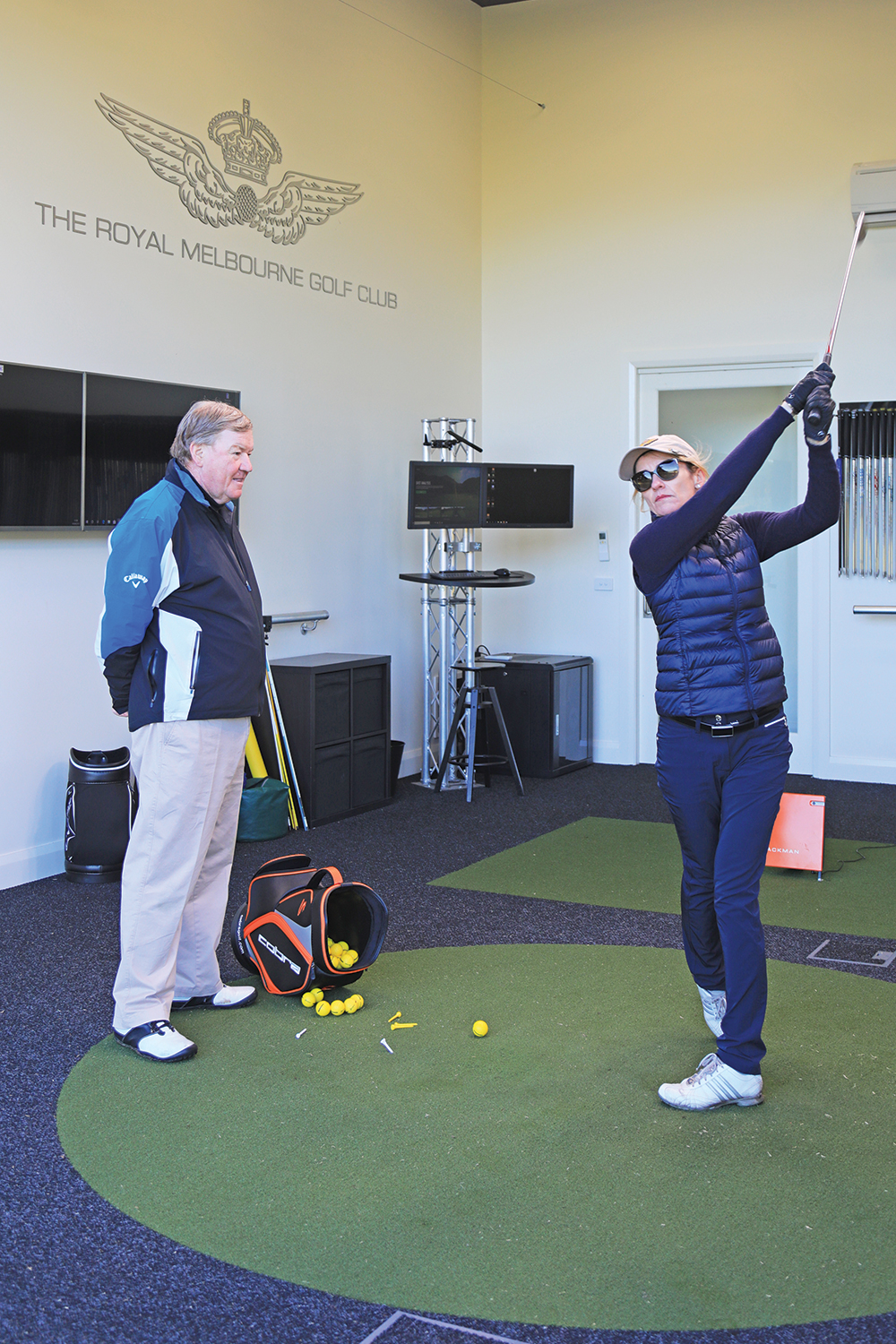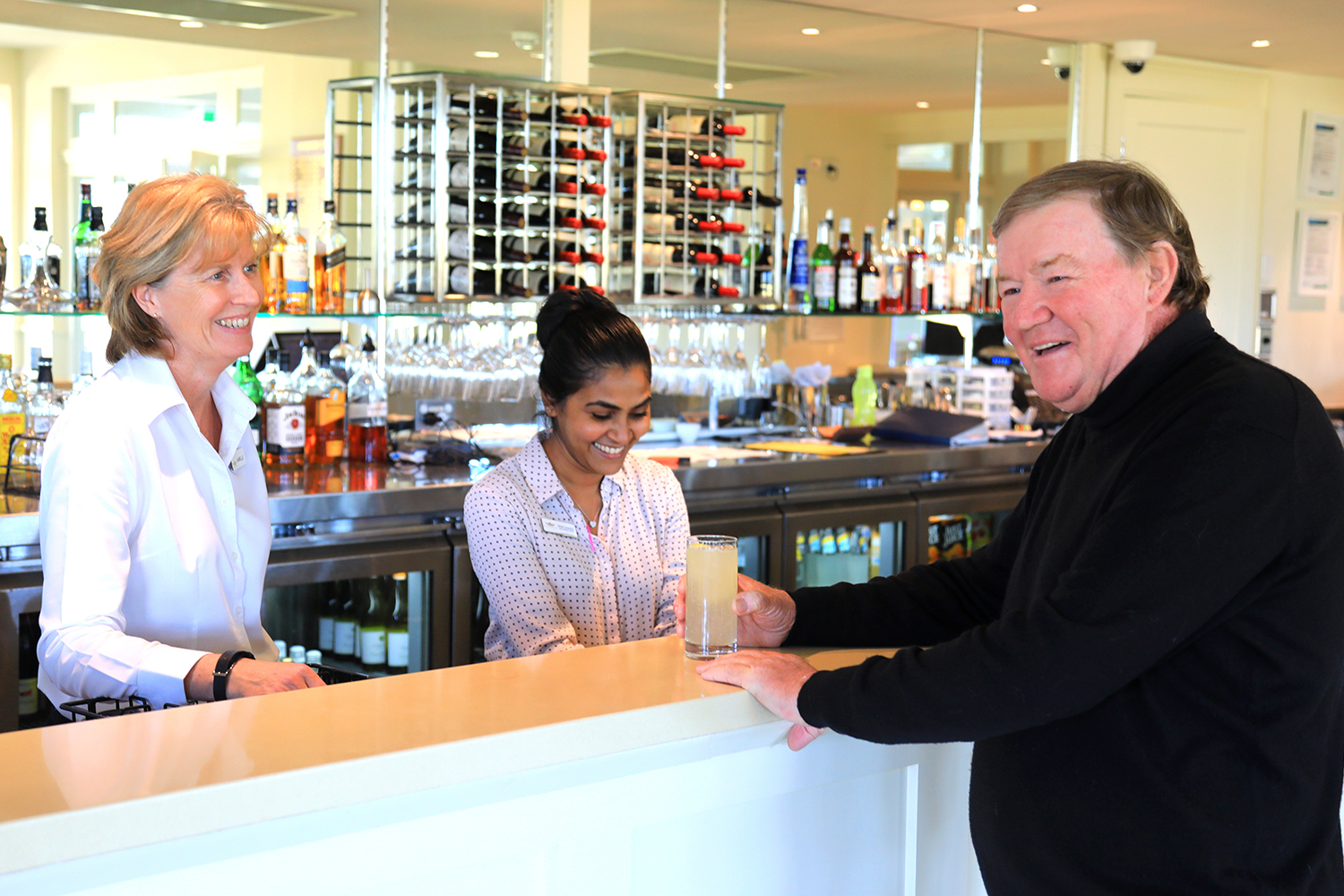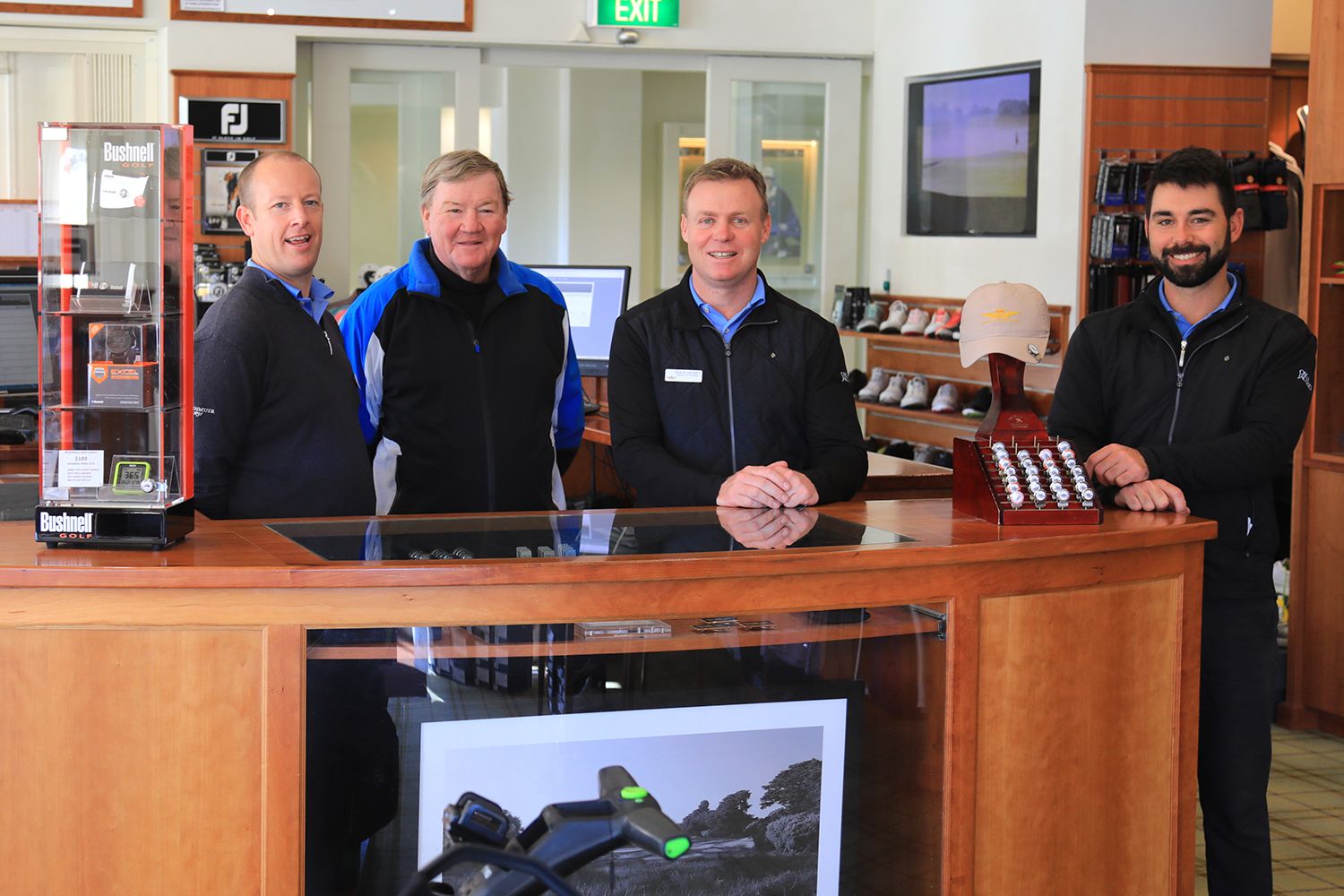Bruce Green | 70 | Royal Melbourne Golf Club Head Professional
Sometimes you think you are invincible, and just keep working and doing your own thing. Then, before you know it, a serious health problem sneaks up on you. In my case, it was a minor stroke that crept up on me earlier this year and I ‘celebrated’ my 70th birthday in a hospital bed. It slowed me down for a while but I am delighted to say I have made a full recovery. I have lost weight, I am the fittest I’ve ever been and I am eating well. But a word of advice: always get your arteries checked. One of my main arteries was blocked and that caused the stroke. There is no doubt I dodged a bullet.
▶ ▶ ▶

I have never lived more than a kilometre from Royal Melbourne and can see the 13th hole on the West course from my bedroom window when I wake up every morning. I have been extremely fortunate to work at the game’s cathedral as a head professional for 40 years. This month I am stepping away from the business side of things and relinquishing the head professional’s role. But the club wants me to stay on to continue teaching my pupils – members and non-members – for as long as I want. That’s the beauty of this job: you can keep going for as long as you like. I walked into Royal Melbourne as a 13-year-old in short pants looking to make some pocket money as a caddie. Almost 60 years later, I am still doing it.
▶ ▶ ▶
I have never had a golf lesson in my life, yet I won two Victorian PGAs and came close to winning an Australian PGA. All my tuition came during my years as a caddie. It was a very natural way to learn the game. You just watched your boss – the member whose bag you were carrying. I learnt about shaping shots, recovery and how to make something out of nothing. I watched them and thought I could do it better. I caddied for a member, Tom Graham, for three years. He had a wonderful bunker method, a beautiful wristy action, and I have copied it ever since. Over the years, I have been regarded as one of the best bunker players in Australian golf. Caddieing taught me that; just watching and learning.
▶ ▶ ▶
Never having had a golf lesson is not the greatest advertisement for the craft of the teaching professional. But I think the art of teaching comes down to identifying the weaknesses. I am one of those teachers that works on feel. My pupils can feel what I am saying, feel the difference between the right and wrong way. They don’t get bound up in mechanics. Half the golf population is too bound up in the mechanical side of things. They try too hard. They tighten up and don’t have a natural feel for the shot. Of course, you have to get all the basics right first – grip, posture, stance, alignment – then try to feel the shot.
▶ ▶ ▶
Bubba Watson sees and feels the shot, then delivers it. He’s as good an instinct player as I have seen. He’s not a clinical, routine guy. He just plays by feel. The great players all have feel. You don’t see them swinging in mechanical pieces. It all flows. I am just not a mechanical person. I would be a hopeless teacher if I had to go through all those mechanical things. I am not denying that the mechanical way often suits younger golfers. I am not knocking the coaches of today; I think they do a great job. But if you pour technique into your pupils – especially older golfers and ladies – they just get frazzled.

I was more of an old-school player when it came to technique – too much sloppy leg action, too much wrist. I was a reasonable three-round player but when the pressure came on in the last round, I would shoot 78. The old wristy golf swing under pressure failed to stand up. With hindsight, I might have been better if I had been more mechanical. I won a lot of one-round pro-ams and broke 10 course records. When the pressure wasn’t on, I would just go out and do my own thing. But when the pressure was on in the last round I could not stand in front of 3,000 people watching me hit a golf ball.
▶ ▶ ▶

I maintain golf is still the toughest sport, mentally. Look at a guy like David Graham. He was just so tough mentally on the golf course. Nothing could get to him. I never saw him back off or collapse. He was about as good you get in that regard. I was still a caddie when he was a trainee professional and thought if he could be a golf pro then I could. At the time, I thought I could beat him. But I watched him over the years. A lot of things went against him but in the end, they drove him to be so dedicated. He got everything out of himself and put a lot into it. And his efforts were rewarded.
▶ ▶ ▶
The key to my longevity as a club pro has been to just keep giving and giving. And it comes back the other way in spades. I cannot believe how many members enquired after me and worried after my illness. I was genuinely overwhelmed. In a way, they are my extended family. Any pro that has succeeded is someone who has given a lot. The member is always right. If you fight with the member, then you are in trouble. My mantra has always been that the more you give, the more you receive. The late Paul Rak, who started as a caddie when I did and rose to be general manager at RM, was the same. He knew everybody’s name and went out of his way to keep the members happy. We were very similar in that regard. He left a fair hole when we lost him.
▶ ▶ ▶
I have made a lot of terrific friendships from the game, none more than my former playing peers Geoff Parslow, Ian Stanley, Bob Shearer and Stewart Ginn. We all grew up together. I played golf with them, toured with them, ate and drank with them. We had a lot of fun. I am also good mates with Brett Ogle (who was forced out of the game with the yips) and played matchmaker for him and his wife, Ricki, more than 10 years ago. I see a lot of them both. I’m sure players still forge strong friendships but it is a lot more clinical on tour these days, nothing like it was back then. When we played tournaments, the first thing you would do was go into the clubhouse, sit down and have a beer. Now they practise for another hour or go to the gym. It’s a different world altogether. The money has become so big in the game that everyone is looking for an edge. I must say there are very few ‘duds’ in golf – amateur or professional – and when they do come along, the scene weeds them out pretty quickly.
▶ ▶ ▶
My longevity as a teacher is by and large due to me being a very patient person by nature. I can stand on the practice range and look at the worst golf swings in the world. My job is to make them look better and send people home happy. I am lucky being able to do what I do for as long as I want to do it. Be it in the cold, a little bit of rain or in bright sunshine, I have always loved what I am doing. And I still love it. And I have gone from a little caddie who left school at a young age to life member at Royal Melbourne. I have no regrets.

I have been privileged to play with many people over the years, including the great comic Bob Hope. He topped his tee shot off the first and finished behind a little shed. He turned to his wife Dolores and said, “Geez, I heard this was a hard course, but this is real hard.” I also played with Sir Donald Bradman a couple of times. He was a good player and he played seriously. He’d actually come in and ask to play with a pro. I wouldn’t say he was really open and friendly. He once said in an interview, high-profile sportspeople feel like they have a cage around them. They all get a bit protective of themselves and he was a bit that way. But out on the golf course everyone comes back to square.
▶ ▶ ▶
I used to teach the blind golfer, Eric Haile. After about three months he seemed to be getting better. The caddie used to line the clubface up with the ball and after that I would just tell him what to do. Then it all came down to ‘feeling’ the shot. I never played with him but he always went out and played nine holes. After a while he said he wanted to play me for money. Amazingly, he said he would play me off the stick. That seemed like a good deal for me until he said the only proviso was that we had to play at 3am. I think he would have had me covered if we’d played in the middle of the night! Eric went on to win a number of tournaments for the visually impaired and travelled to the US with his coach Ray Wright to play in them.
▶ ▶ ▶
Some people are unteachable. When an American, Mike Butcher, rang me out of the blue a few years ago and said he had seen clips of me teaching on YouTube, I thought it was Geoff Parslow prank calling me. But the caller persisted, saying he was hopeless at the game and wanted to cut a deal about giving him some lessons. He came down to the club and he was hopeless. He was a right-handed player and I tried every drill in my kit bag and eventually, before one lesson, I decided to tell him he just wasn’t getting any better. It was going to be one of the rare occasions when I told someone to give the game away. Then, as the last resort, I put a left-handed Callaway demo driver in his hand. He hit it about 200 metres with a beautiful draw. He bought a brand new set of left-handed Callaway clubs and has been playing ever since. I gave him a chance to have fun and now he loves it. That’s why I have the best job in the world.



